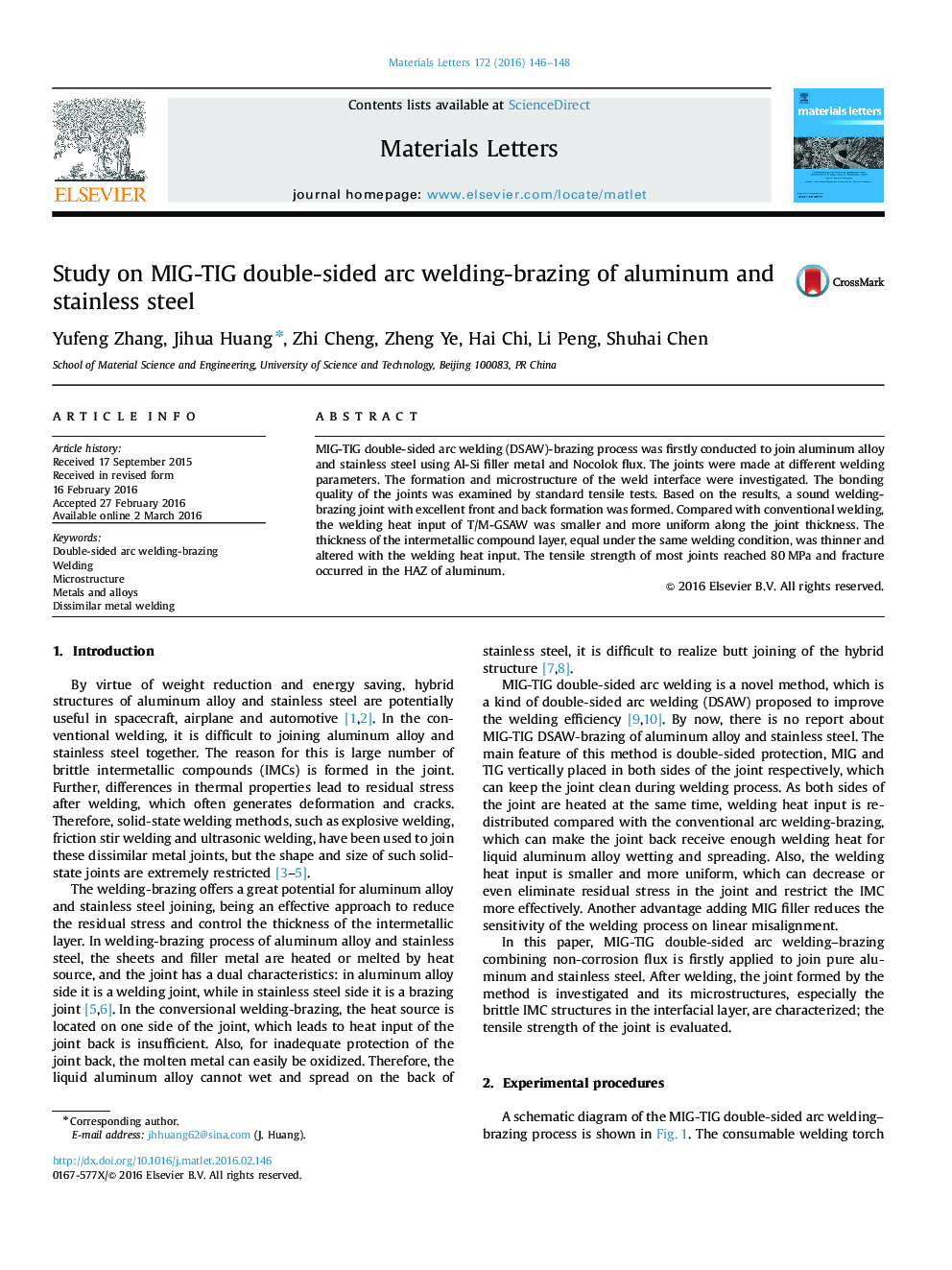| کد مقاله | کد نشریه | سال انتشار | مقاله انگلیسی | نسخه تمام متن |
|---|---|---|---|---|
| 1641558 | 1517216 | 2016 | 3 صفحه PDF | دانلود رایگان |
کلمات کلیدی
1. مقدمه
2- روش های آزمایش
شکل 1. طرح شماتیکی از فرآیند لحیم کاری –جوشکاری قوسی دو طرفه MIG-TIG
3- نتایج و بحث
3-1- ظاهر و ماکروساختار
شکل 2. ظاهر و سطح مقطع اتصال فولاد ضد زنگ-آلومینیوم: (A) طرف جوش، (b) پشت جوش، (c) سطح مقطع جوش
3-2- میکروساختار و بین فلزی
شکل 4. تصاویر SEM در موقعیت مختلف اتصال استیل ضد زنگ-آلومینیوم: (a) لایه IMC در ناحیه A، (b) دانه جوشکاری شده در ناحیه B، (c) ناحیه گداخت در ناحیه C
جدول 1. نتایج EDS برای فازهای بین فلزی در جوش (برحسب درصد)
3-3- نتایج تست تنشی
4.نتایج
• MIG-TIG double-sided arc welding is firstly used to join aluminum and steel.
• Macrostructure, Microstructure and mechanical properties of welds are studied.
• Wetting and spreading behavior of liquid metal on the back of stainless is excellent.
MIG-TIG double-sided arc welding (DSAW)-brazing process was firstly conducted to join aluminum alloy and stainless steel using Al-Si filler metal and Nocolok flux. The joints were made at different welding parameters. The formation and microstructure of the weld interface were investigated. The bonding quality of the joints was examined by standard tensile tests. Based on the results, a sound welding-brazing joint with excellent front and back formation was formed. Compared with conventional welding, the welding heat input of T/M-GSAW was smaller and more uniform along the joint thickness. The thickness of the intermetallic compound layer, equal under the same welding condition, was thinner and altered with the welding heat input. The tensile strength of most joints reached 80 MPa and fracture occurred in the HAZ of aluminum.
Journal: Materials Letters - Volume 172, 1 June 2016, Pages 146–148
